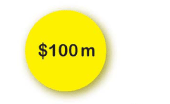What is the Dots & Dashes Game?
Dots & Dashes provides an opportunity for Delaware Valley residents and stakeholders to discuss and express their priorities for future investments in public transportation in a fun, hands-on game setting. Each group will end the game with a list and map of future agreed-upon investment priorities that, together with the results of other groups who play, will inform DVRPC's next Long Range Plan and other projects, including a new Regional Transit Vision plan.
Development of the Game
Design of game board and playing pieces
The design of the Dots & Dashes game board reflects an effort
to balance simplicity and a "blank slate" feel with sufficient
information to inform players' decisions and generate constructive discussion.
To this end, the game board includes elements such as:
- Major roadways and all rail routes for orientation to the existing transportation network
- Significant employment, shopping, and commercial centers for use as player landmarks
- Smart Growth Development Centers from DVRPC's Destination 2030 Long Range Plan
- Areas within the top categories of DVRPC's Transit Score Tool were shaded in gray to highlight areas with population and job densities that are most supportive of transit. For more information on the Transit Score, click here
Click here [7.4MB .pdf] to view a high-resolution image of the Dots & Dashes game board.
The Dots & Dashes game pieces take the form of four types of adhesive stickers, two dots, and two dashes. The dots allow players to place node (or spot) improvements on their game boards, and the dashes are for corridor (or line) improvements. Each game piece has a dollar value on it, which reflects the rough cost of the improvements covered by that game piece, inflated to 2030 dollars and in scale with the game board (in the case of dashes).
Small Dot |
|
Large Dot |
|
Rapid Bus Dashes |
|
Rail Dashes |
|
Click here to download a PDF of the Dots & Dashes game pieces.
Costs for rail and "rapid bus" dashes are derived from the most recent FTA report on New Starts (FTA Annual Report on Funding Recommendations Proposed Allocations of Funds for Fiscal Year 2008 - New Starts, Small Starts, Alternative Transportation in Parks and Public Lands).
Again in an effort to balance a grounding in reality with simplicity (and playability by agency stakeholders as well as lay members of the public), costs for rail projects are averaged for all modes of rail. Accordingly, rail dashes reflect the average per-mile cost of all rail projects and exclusive-guideway BRT projects in FTA's FY2008 Annual Report on New Starts, excluding the Second Avenue Subway and Trans Hudson Express / Access to the Region's Core projects. This includes 13 rail projects and 4 busway projects.
"Rapid bus" dashes reflect the average per-mile cost of all in-street BRT-oriented projects in FTA's FY2008 Annual Report on New Starts. This includes 6 BRT projects. Note that the cost/mile is substantially reduced by Los Angeles' combined 120 mile length for the extension of its Metro Rapid program.
Costs for dots (node projects) are derived from order of magnitude costs in the most recent SEPTA and New Jersey Transit capital budgets, inflated to 2030 dollars.



